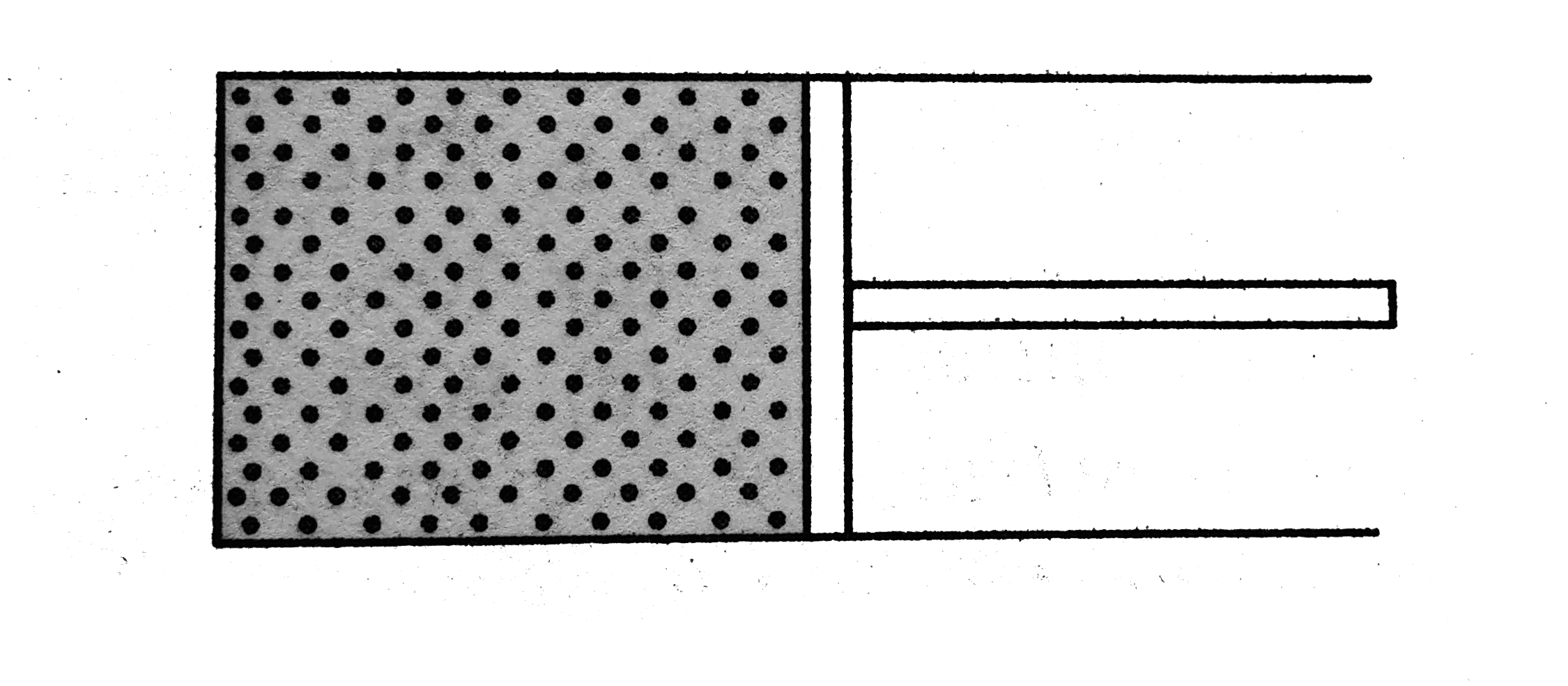Two moles of an ideal gas is contained in a cylinder fitted with a frictionless movalbe piston, exposed to the atmosphere, at an initial temperature T0. The gas is slowly heated so that its volume becomes fout times the initial value. The wor done by gas is
zero
2RT0
4RT0
6RT0
The correct Answer is:D
d. Since the gas is slowly heated, it remains in equilibrium (more or less) with the atmosphere, i.e., the process takes place at a constant pressure.
Now, from PV=nRT,PdV=nRdT
or, PΔV=nRΔT
But PΔV is the work done by the gas.
So, ΔW=nRΔT=(2mol)(R)(4T0−T0)=6RT0
[From Eq. (i) ΔV∝ΔT, i.e., if ΔV=3V0,ΔT=3T0]
Topper's Solved these Questions
- BOOK - CENGAGE PHYSICSCHAPTER - KINETIC THEORY OF GASES AND FIRST LAW OF THERMODYNAMICSEXERCISE - Multiple Corrects29videos
KINETIC THEORY OF GASES AND FIRST LAW OF THERMODYNAMICS
- BOOK - CENGAGE PHYSICSCHAPTER - KINETIC THEORY OF GASES AND FIRST LAW OF THERMODYNAMICSEXERCISE - Assertion-Reasoning6videos
KINETIC THEORY OF GASES AND FIRST LAW OF THERMODYNAMICS
- BOOK - CENGAGE PHYSICSCHAPTER - KINETIC THEORY OF GASES AND FIRST LAW OF THERMODYNAMICSEXERCISE - Subjective22videos
KINETIC THEORY OF GASES AND FIRST LAW OF THERMODYNAMICS
- BOOK - CENGAGE PHYSICSCHAPTER - KINETIC THEORY OF GASESEXERCISE - Compression2videos
KINETIC THEORY OF GASES
- BOOK - CENGAGE PHYSICSCHAPTER - LINEAR AND ANGULAR SIMPLE HARMONIC MOTIONEXERCISE - Multiple Correct Answer Type9videos
LINEAR AND ANGULAR SIMPLE HARMONIC MOTION
Similar Questions
Two moles of an ideal gas are contained in a vertical cylinder with a frictionless piston. The piston is slowly displaced so that expansionin gas is isothermal at temperature T0=400K. find the amount of work done in increasing the volume to 3 times.t ake atmospheric pressure =105N/m2
View SolutionA perfect gas in a cylinder provided with frictionless piston is at 37∘C. The gas is cooled at constant pressure so that its volume becomes (4/5)th of its initial volume. Find the resulting temperature.
View Solution
Knowledge Check
- Question 1 - Select One
3 moles of an ideal gas are contained within a cylinder by a frictionless piston and are initially at temperature T . The pressure of the gas remains constant while it is heated and its volume doubles . If R is molar gas constant , the work done by the gas in increasing its volume is
A32RT ln 2B3RT ln 2C32 RTD3 RT - Question 2 - Select One
One mole of an ideal gas is contained with in a cylinder by a frictionless piston and is initially at temperature T. The pressure of the gas is kept constant while it is heated and its volume doubles. If R is molar gas constant, the work done by the gas in increasing its volume is
ART ln2B1/2 RTCRTD3/2 RT - Question 3 - Select One
n moles of a gas are filled in a container at temperature T. If the gas is slowly and isothermally compressed to half its initial volume, the work done by the atmosphere on the gas is
 AnRT2B−nRT2CnRTIn2D−nRTIn2
AnRT2B−nRT2CnRTIn2D−nRTIn2
One mole of an ideal gas is contained in a vertical cylinder under a massless piston moving without friction. The piston is slowly raised so that the gas expands isothermally at temperature T0 = 300 K. Find the amount of work done increasing the volume to η=2 times. The outside pressure is atmospheric.
View SolutionThe pressure of an ideal gas varies with volume as P= aV, where a is a constant. One mole of the gas is allowed to undergo expansion such that its volume becomes ‘m’ times its initial volume. The work done by the gas in the process is
View SolutionIf the temperature of an ideal gas in a sealed, rigid container is increased to 1.5 times the initial value (in K), the density of gas
View SolutionAn ideal diatomic gas is expanded so that the amount of heat transferred to the gas is equal to the decrease in its internal energy.
If in the above process, the initial temperature of the gas be T0 and the final volume by 32 times the initial volume, the work done ( in joules ) by the gas during the process will beView SolutionWhen one mole of an ideal gas is compressed to half of its initial volume and simultaneously heated to twice its initial temperature, the change in entropy of gas (DelataS) is:
View Solution

